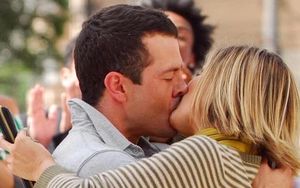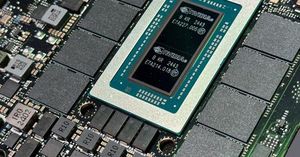On March 5, 2025, the creator of the webcomic "Neurosurgeon Taketa-kun," which was inspired by medical malpractice incidents at Akaho Municipal Hospital, filed a lawsuit with the Osaka District Court. The author, who is related to one of the patients affected by the malpractice, seeks confirmation of not being liable for defamation claims brought by the physician, Hiroki Matsui, who is accused of negligence.
The suit emerged following allegations against Matsui, who is 46 years old and voluntarily retired, after being indicted for severing the nerve of a female patient during surgery back in January 2020. This incident, which resulted in the patient suffering severe aftereffects, sparked significant interest and concern about the quality of care provided at the hospital. Upon investigation, it was revealed Matsui was involved in several operations at Akaho Municipal Hospital, which had led to eight medical accidents over six months.
From January to July of the previous year, the author published "Neurosurgeon Taketa-kun" online, drawing from these medical mishaps as the backdrop for the fictional narrative. The work, described as having aspects of public interest, was created to highlight the repercussions of the medical incidents and provoke discussion. On October 2023, Matsui initiated legal proceedings to unmask the author, claiming parts of the manga constituted defamation. The Tokyo District Court approved his request for disclosure, which meant the author's personal information was handed over, marking the formal beginning of legal confrontations between the two parties.
During the press conference held on March 11, 2025, the author asserted, "Even if there have been criminal complaints or lawsuits filed by the doctor... I would like to firmly assert public interest and respond politely." He reiterated his belief there was no malicious intent behind the manga, emphasizing its role as a reflection on public health and the need for transparency. According to the author, he felt compelled to write about the traumas endured due to such medical errors and insisted on the factual basis of the comic's content.
The manga navigates through the experiences faced by families affected by the shortcomings of medical practices within public health systems, capturing not just the incidents of negligence but also the bureaucratic hurdles victims often endure when seeking justice. The relative remarked on the manga's goal, saying, "If the truth of the series of medical accidents is not clarified... new victims may be born again.” He expressed grave concern about the fading memories of medical malpractice cases, which he believes could potentially pave the way for recurrence without acknowledgment of the failures.
Despite the doctor's claims of defamation, the author, represented by attorney Takashi Hirano, firmly stands by the manga's contents, contending there are no grounds for defamation. Hirano stressed the manga was based on significant events and contained elements of truth, positioning it as part of the public interest narrative surrounding healthcare practices at the hospital. The author remarks, "People who read the manga may think, 'Is this kind of thing really happening?' Actually, we thought so too before we encountered the medical malpractice incident,” highlighting the disconnect often felt between clinical practices and public perception.
The legal dynamics of the case reveal conflicting perceptions of freedom of expression versus potential reputational harm. While the author maintains his work serves to protect the public by raising awareness, Matsui's fear of unjust character assassination through artistic expression reflects the delicate balance between accountability and artistic freedom within the healthcare sector.
With 142 episodes of the manga published, its reception indicates community engagement with its themes, yet the ramifications of Matsui's legal recourse pose intriguing questions about the boundaries of artistic representation and the protection provided for medical professionals against representations stemming from their real-life practices.
Proceeding through the legal corridors, the case has broader implications, as it raises concerns over what constitutes defamation within creative expression, particularly when based on true events. The outcome not only affects the individuals involved but also has the potential to influence how such narratives can be told publicly without fears of legal repercussions.
With both parties slowly moving through the court system, the author’s determination to prove the legitimacy of his work stands firm against Matsui's attempts to protect his professional image. The discourse will likely set important precedents concerning liability and freedom of speech, particularly as society grapples with the consequences of medical malpractice and the voices fighting to bring these issues to light.
While legal strategies are still being formulated, the initial responses from both sides suggest heightened sensitivities surrounding reputations, truth, and the narratives being shared with the public. The court's ultimate decision will undoubtedly resonate beyond the cases presented, echoing the fundamental principles of justice, accountability, and the role of creative expression.



